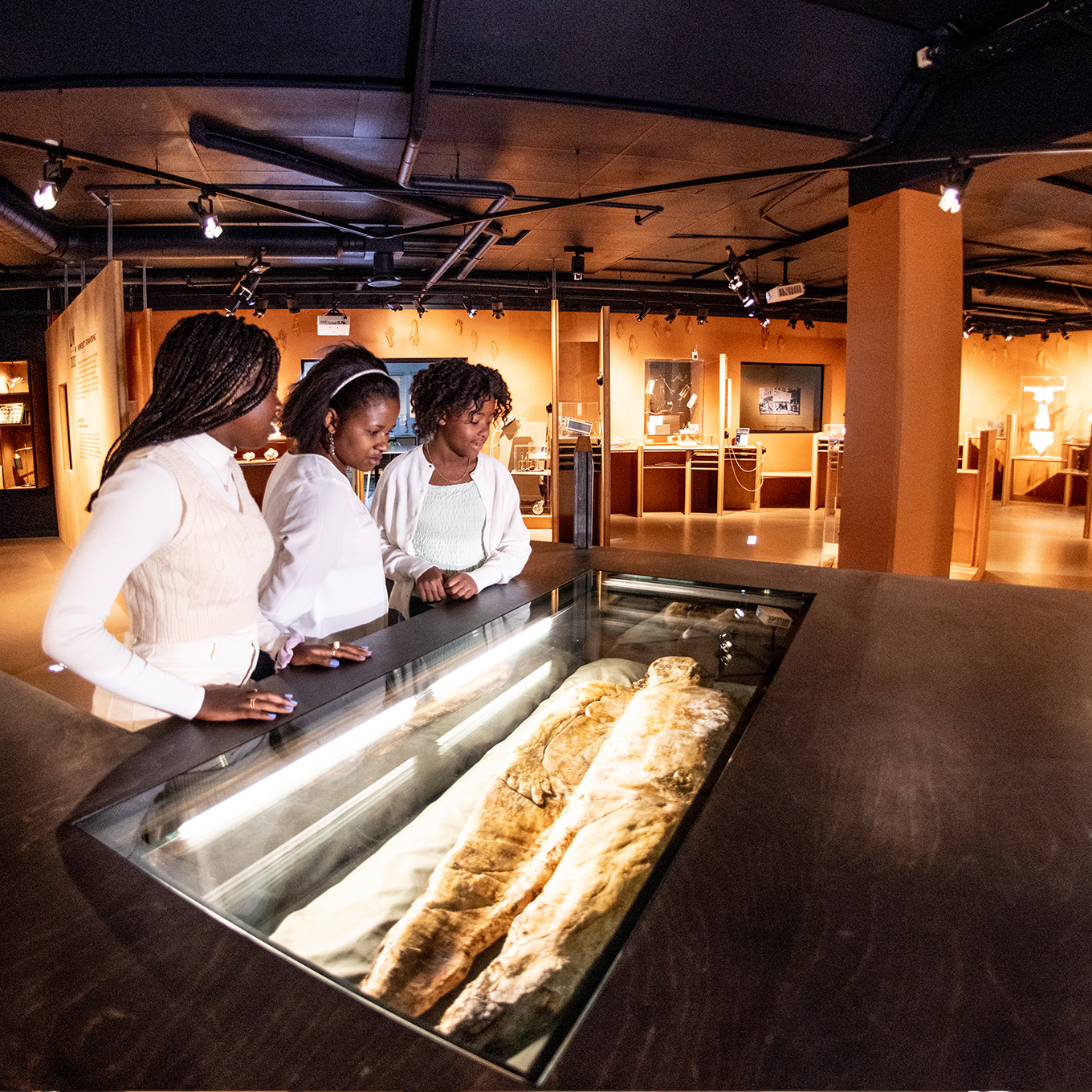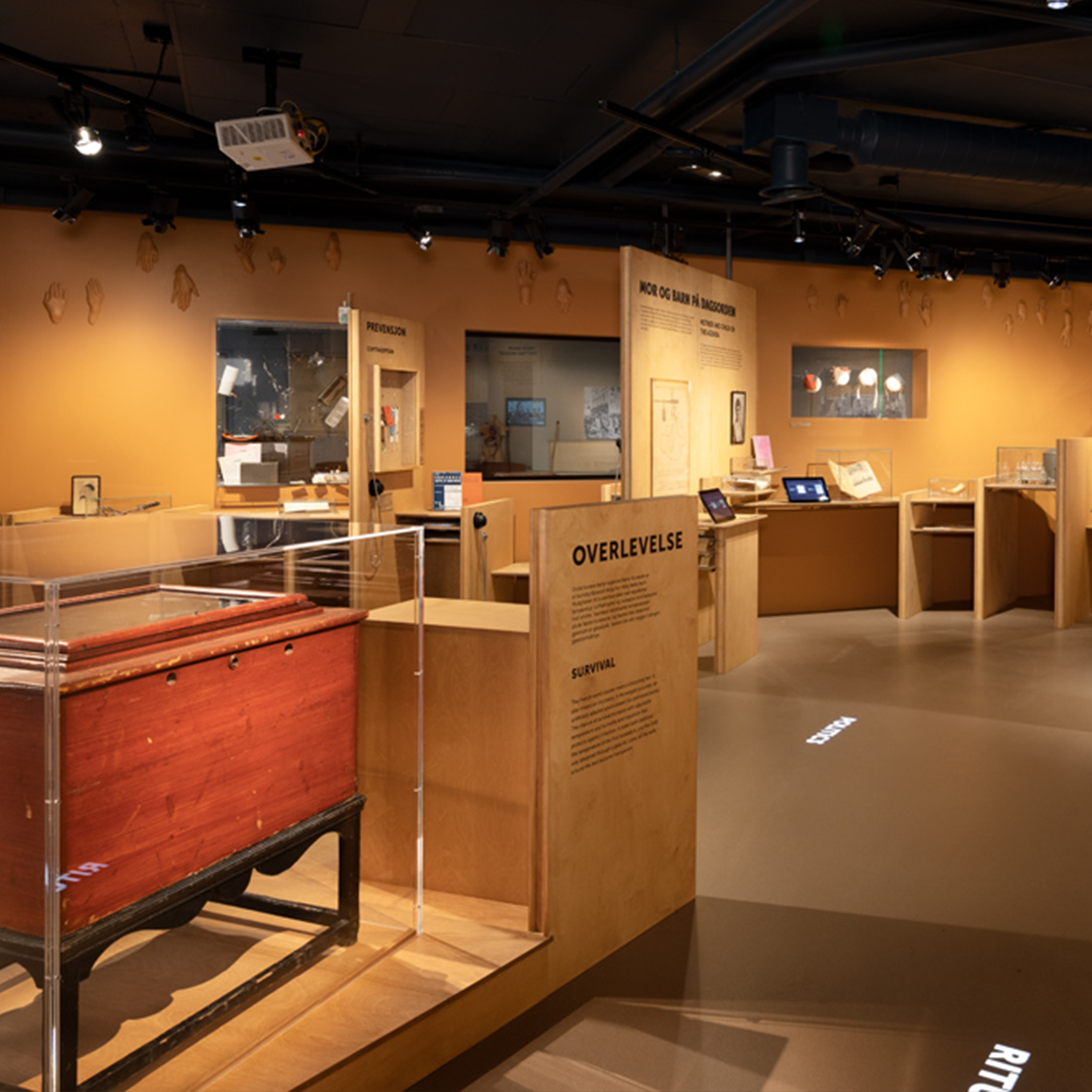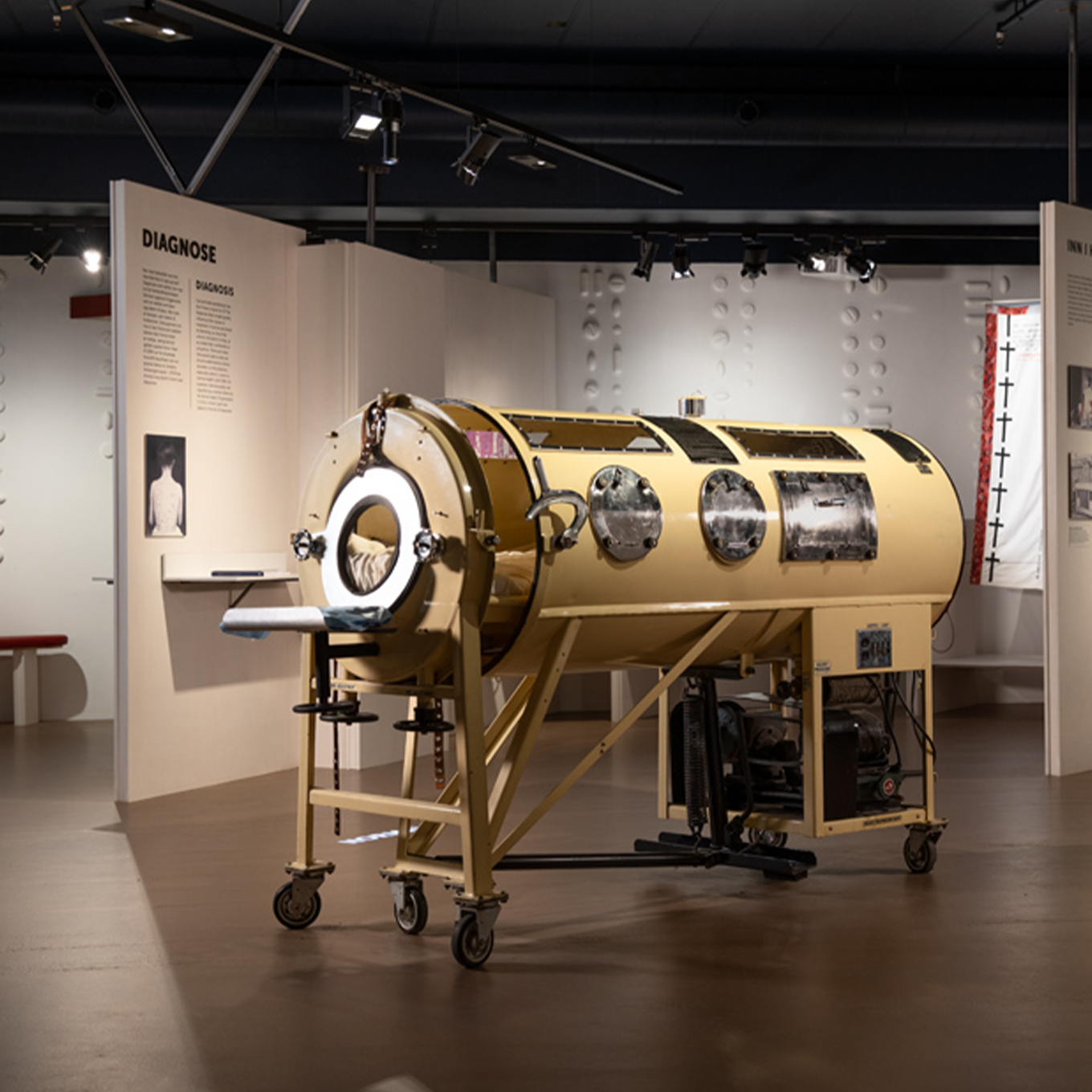Health and upbringing
Clean and unclean
Teaching program aimed at students at Health and Development, with a focus on hygiene and public health, in the period after the industrial revolution. Students interested in history can also enjoy this tour.
Target group : VGS
Number : One class/Max 20 students
Duration : 45 minutes
Subject area : Hygiene, Medicine, History
In the event of non-attendance without cancellation seven days before the day of attendance, the client will be invoiced a fee of NOK 500.
Curriculum:
Health promotion work (HSF01‑03)
- Assess what promotes mental and physical health, and how one can prevent lifestyle diseases and prevent infection
- use hygienic principles to promote good health
History
- Present important demographic changes and assess the causes of these changes and their effects on people and society
What happens in this learning offer?
Increasing knowledge about infection has changed the prevention and treatment of disease over the past 150 years. Our understanding of clean and unclean is challenged in the face of examples from the history of health.
Description of the lesson:
The tour takes place in the Life and Death Exhibition and the students get to sit on chairs that they can take with them when we go around. The number of stops varies somewhat, but students can count on 3-4 different stops in the exhibition. We meet the marsh-like Maren. She lies in a box with a glass lid and the students will have the opportunity to study her while a tour guide tells about her life and death. There will also be an opportunity for a student to try lying in an iron lung if time permits.
We want you as a teacher to be active, participating and curious with the children during the visit. The students get the best results if they come prepared, so feel free to show the students pictures or the "INTROVIDEO", tell them about what will happen, and check whether there is associated pre- and post-work for the teaching plan
You as a teacher are responsible for the group during the entire visit.
Explainer is responsible for implementing the program. The teacher has overall responsibility for the students. You may be asked to help along the way.
If you want an invoice, include the resource number and the correct invoice address.
You do not need to bring anything special to the Planetarium, but it is great if you have lots of questions about stars and planets.
If you have also seen the moon on a day when it is visible during the day, that is great!
Preparations
One of the teachers in the group approaches the reception. We will then register that you have arrived and you will be allocated a cloakroom space and possibly cabinet for locking up valuables.
Arrive at the museum no later than 10 minutes before the start of the program. Let us know if you will be delayed by phone. 22 79 60 00 . If you arrive late, the learning offer may be shortened or cancelled.
Click here to find the way to The Norwegian Museum of Science and Technology .
At The Norwegian Museum of Science and Technology the same rules apply as at school/kindergarten. We will
- be role models for each other
- be kind to each other and the exhibits
- use consensus
- don't run.
ATTENTION: Everything behind barriers must not be touched.
Then we all have fun and contribute to a good learning experience. If you decide that your group can visit the museum shop, the teacher must be present as long as some of the children are there.
You can eat the packed lunch in different places; in the cafe, at the reception and outside the museum entrance. It is not allowed to eat or drink in the exhibitions.
Kindergartens and schools can pay by cash/card on arrival or bring an invoice.
For invoices, you must include the requisition or resource number and invoice address.
You meet one of us!

Others

Kjersti

Caspar

Joachim
Preparation:
Our learning offers do not require preparatory work, but it is always useful to prepare students for a museum visit. This can increase the learning outcomes from the museum activity, and links the classroom to the museum. Here are some wondering questions for the class, which can prepare and engage the students before they learn more about the topic at the museum
Wonder question
It is not required, but advantageous if the students have discussed the concept of hygiene in class before the museum visit.
Below are some questions that can be used as a starting point for a conversation about the history of medicine and social development.
-
How many people do you meet in a day and how many people did your great-great-grandmother and great-great-grandfather meet each day?
-
Have any of you gone on an outing? Can you see the advantages and disadvantages of old forms of sewage management?
-
What do you think is the most common cause of death in children in the world today?
-
The good news is that far fewer children die before they are 5 years old than in the 1990s. What do you think this decline is due to?




